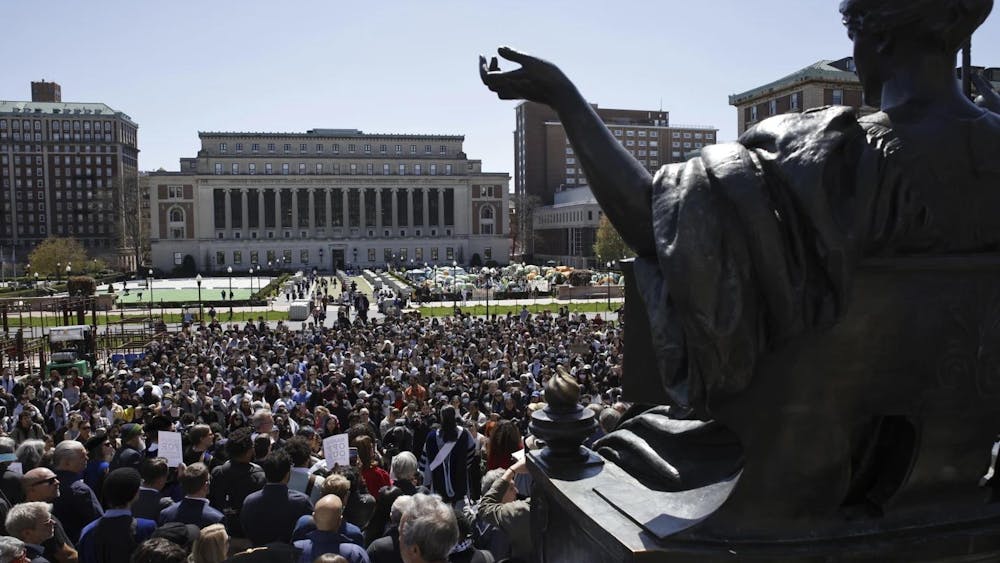According to a philosophy professor, the Harry Potter series is more than just wizards, owls and house elves.

John O'Callaghan, associate professor of philosophy, delivered a lecture titled "Harry Potter and the King's Cross" on Tuesday in DeBartolo Hall. The lecture was the second installment of the Notre Dame Center for Ethics and Culture's Children's Literature Series.
O'Callaghan said his thesis was that the Harry Potter series is a carefully constructed allegory of the search for wisdom through Christ.
He said J.K. Rowling's bestselling fantasy series reflects the conflict between the modern philosophy of Friedrich Nietzsche, Immanuel Kant, and Rene Descartes, who argued that wisdom lies in the search for power, and the Christian and pre-Christian philosophy of Socrates, St. Augustine and St. Thomas Aquinas, who argued that "faith makes reason possible."
O'Callaghan said the series focuses on conflict between the love of power and divine love.
"The novels are not a tale of ordinary magic," Callaghan said, "They are a tale of extraordinary magic, exploring the tale of two loves: the love of power, which is a philosophy of domination and wealth, versus a power of wisdom, which puts one in the presence of divine love."
Callaghan said Rowling uses Latin and French terms to name characters, objects, and spells, evoking imagery of the nature of those elements. For example, when naming Harry Potter's archrival, Draco Malfoy, Rowling uses the Latin word for serpent (Draco) and the French term for bad faith (Mal foi). Voldemort, the antagonist of the series, is a reimagining of a French phrase meaning,"will to death," he said

O'Callaghan said many of these names and the stories that come with them are also directly representative of medieval Christian symbols. For example, Gryffindor, the Hogwarts House Harry joins at the beginning of the series, is a "golden griffin," a mixture of a lion and an eagle, both symbols of Christ, he said. On the other hand, Slytherin, the House of many of the series' antagonists, evokes the image of a snake, which he said is the enemy of Christ.
This symbolism, Callaghan said, extends to the plots of the books themselves. He said the relationship between the Philosopher's Stone of the series' first book and the tears of the phoenix in the second are important symbols because both give life to those who are about to lose it.
The Philosopher's Stone, however, gives a "technological" kind of life, one in pursuit of wealth, O'Callaghan said. The phoenix gives a different message. He said the phoenix, a bird that will burst into flame and be reborn from its ashes in the same way that Jesus was resurrected, heals Harry's mortal wound with its tears, giving him a more fulfilling kind of life.
"Genuine life, that is, genuine love, is often found more in the tears of life ... than in untold riches and power," O'Callaghan said.
O'Callaghan said Harry wins in the struggle for wisdom at the end of the series when he walks to his death without hesitation and upon coming back to life, leaves behind his own dark side.
J.K. Rowling has herself confirmed the religious parallels in her series, he said. In a news conference shortly after the release of the final novel in 2007, she revealed that there had always been religious undertones in her work, but that she had refrained from confirming them because she was afraid she would give away the ending of the story.
"Harry Potter and the King's Cross" was the second lecture of the four-part Children's Literature Series. The third lecture, "Young Adult Literature," will take place on Tuesday, Oct. 15, and the fourth, "The Hunger Games," will take place on Tuesday, Nov. 12.












